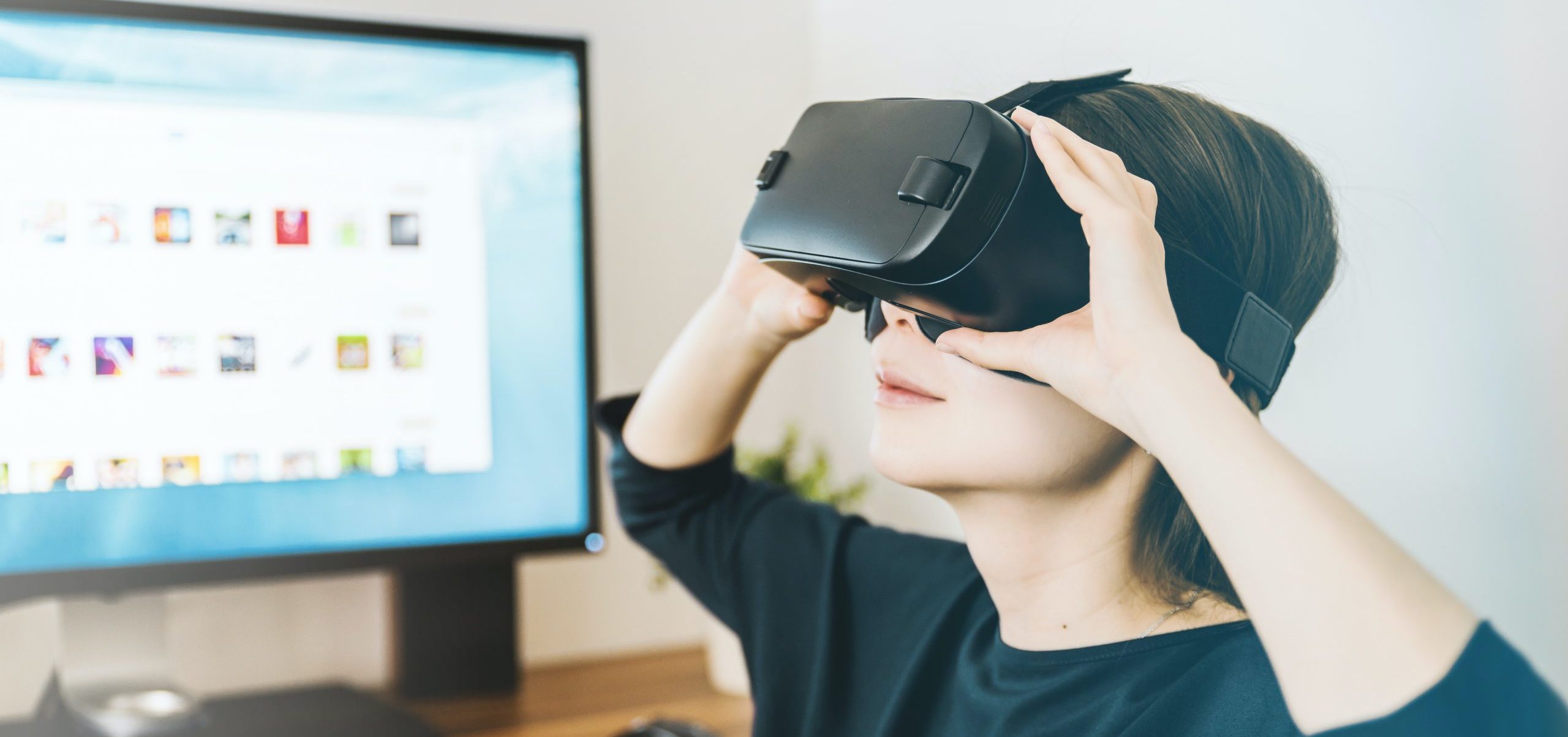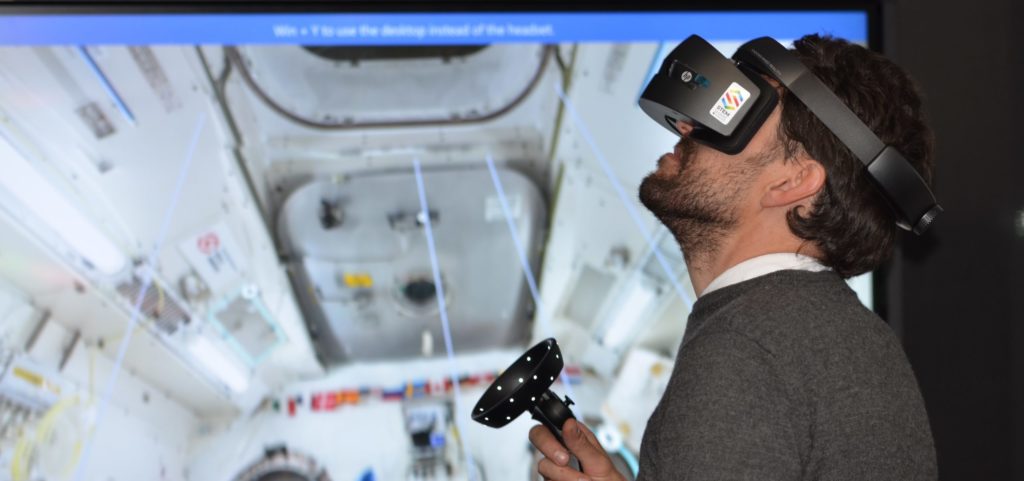Learning Through Experience: The Value of Immersive Learning in University
All educators know how difficult it can be to keep students motivated and engaged. The lack of real-world experience in traditional classrooms can lead to boredom and disinterest.
Today’s students long for more realistic, engaging content directly connecting to their coursework.
Thankfully, the immersive learning revolution is here. VR headsets, AR devices, and other tools give students a life-like experience with in-depth videos and simulations that drop them right into the action, creating a unique and unforgettable learning experience.
Are you ready to break up the monotony in your classroom and make learning fun again? This article will tell you everything you need to know about the value of immersive learning in university and how you can use the method with your students.
What is immersive learning?
Immersive learning is a process of teaching that engages learners in an interactive, experiential way. The process usually occurs in virtual and augmented reality environments, although there are other ways to apply the technique, such as through videos and simulations.
Immersive learning is a fantastic way to teach diverse skills, including public speaking, medical procedures, machine repair, and many more. Higher education institutions also use the method to teach more general topics like literature and history.
According to a 2007 study by the University of Wollongong, immersive learning aims to achieve something known as cognitive realism.
In contrast to physical realism, cognitive realism describes a sensation that mirrors reality. While these sensations are not physically real, they are convincing enough to evoke genuine reactions in the brain. For example, a person riding a roller coaster in virtual reality may experience the same ‘stomach dropping’ feeling as they would during a real ride.
An immersive approach to teaching has many benefits for students and educators, including higher engagement, increased motivation, and improved learning outcomes.
What does an immersive learning environment look like?
As mentioned above, immersive learning environments usually involve augmented reality, virtual reality, or other simulations. In a classroom, teachers will typically assign a VR headset or augmented reality device to each student—although many institutions choose to outsource.
Thanks to the power of modern technology, there’s no limit to how immersive learning environments can look. Pop on a VR headset, and you can find yourself in another country, another planet, or another universe entirely!
Many immersive learning environments aim to simulate a scenario relevant to a particular set of skills. For example, engineering students would benefit from interacting with 3D models on a virtual construction site. This approach eliminates expensive equipment costs and the danger of working in hazardous environments.
Types of immersive learning technology
Now, let’s go into more detail about the different kinds of immersive learning technology and their higher education applications.
Virtual reality
Virtual reality describes a computer-generated simulation of a 3D image or environment. Using a headset or a similar device, users can interact with the environment in a seemingly real, physical way.
Most virtual reality devices have additional peripherals allowing users to interact with the simulated environment. These peripherals include handheld controllers, treadmills, and wristbands. Users can also move around in the virtual world by walking within a defined area.
Today, people typically interact with virtual reality technology in the form of gaming.Virtual reality games involve everything from exploring a simulated world to shooting enemies.
Increasingly, however, universities and colleges are using the same immersive technology to provide unique educational experiences, including:
- Meetings in a virtual classroom
- Simulated excursions to other countries
- Historical reenactments
- Work simulations
- Virtual internships
- Laboratory simulations
These virtual experiences allow students to interact with hazardous or otherwise inaccessible environments by moving, touching, looking, and listening—much like they would in the real world.
Augmented reality
Augmented reality (AR) is a hybrid approach that involves adding a digital ‘layer’ to the physical world. Rather than replace the real world with a simulation, as virtual reality does, AR enhances a person’s current perception of reality.
AR works by superimposing computer-generated, 3D images over a user’s view of the world—usually through mobile devices such as a smartphones or tablets. This creates a composite outlook where virtual and physical reality blend together.
Augmented reality has many applications within the educational sphere. Students can use the technology to visualise anatomy, experience historical events, build 3D models, and much more.
Mixed reality
Mixed reality (MR) combines physical and virtual space, like augmented reality. It usually requires a headset that projects live images onto the physical plane and unlocks meaningful interactions.
Mixed reality is a unique and exciting way to experience life. It unlocks intuitive and novel ways for people to interact with the world around them.
While augmented reality involves superimposing 3D images over the physical world, mixed reality takes things further, creating an entirely new environment where physical and digital objects co-exist.
The most popular example of MR is the Microsoft HoloLens headset. These ‘smart glasses’ allow users to collaborate with remote colleagues, complete tasks with voice commands and hand tracking, and access real-time information.
In the educational sphere, MR can help students:
- Visualise and interact with architectural models
- Undergo immersive physician training with holographic patients
- Explore the night sky and identify planets, satellites, constellations, and stars
- Improve public speaking skills
- Connect remotely with educators, peers, and potential employers
360° film
360° film is a highly effective immersive learning method that doesn’t require specialised technology; you only need a smartphone, computer, tablet, or TV. It is an engaging form of storytelling that allows the viewer to explore the artificial environment from any angle.
Like the other immersive experience technologies, 360° has many applications, including military training, journalism, and entertainment. During the video experience, users can move their phone or mouse to explore different parts of the scene, so it feels like they’re there!
A 2021 study published in Smart Learning Environments found that 360° video benefits students and educators, enriching the learning experience, satisfying emerging educational needs, and increasing motivation and active participation.
What’s the difference between immersive and experiential learning?
By this point, you’ve likely connected immersive and experiential learning. And we can’t blame you! The two techniques share the same goal—to increase engagement by involving students in meaningful, real-world scenarios.
We can consider immersive learning as a branch of experiential learning, along with work-integrated learning, project-based learning, and other similar pedagogies.
Its virtual nature is the key point differentiating the immersive learning experience from other experiential learning methods. It involves using technology to simulate real-life scenarios, while the other methods involve physical interaction with the outside world.
How can focused immersion improve learning in higher education?
While immersive learning is wholly virtual, it still offers many of the same benefits as other experiential learning techniques. Let’s go into more detail about some of these benefits now.
Fosters learning through experience
Learning through experience is crucial for university students. It allows them to apply their knowledge to real-world scenarios and realise the genuine impact of their work.
Virtual and augmented reality lets learners experience lifelike scenarios where physical interaction isn’t possible, such as hazardous or distant environments. Because there’s no need for specialised equipment, it’s also much more affordable and accessible for universities.
Creates a distraction-free environment
One unique benefit of immersive learning is its ability to plunge students into an entirely different world—a place free from noise, chaos, and other distractions. With their headset, students can become completely immersed in the virtual environment and focus on the task—leading to higher knowledge retention and a better learning experience overall.
Promotes user-centred learning
User-centred learning is a teaching process that makes the student the focus of the educational experience. It ensures each student achieves their unique learning objectives and desires by considering their unique strengths—and, according to a 2004 study, is a fantastic tool for building student commitment and engagement.
Thanks to immersive learning’s versatility—and its avatar-creation features—every student can enjoy a personalised experience relevant to their needs.
Improves knowledge retention
Knowledge retention describes a student’s ability to retain and recall knowledge. It is an essential skill for students hoping to succeed in university, pass exams, and impress future employers.
A 2018 study on virtual reality learning found, compared with traditional instructional methods, that immersive education enhances spatial interaction capability and promotes knowledge retention among adult trainees.
Immersive learning strategies
Immersive learning strategies can boost engagement and motivation. Give these tips a try to implement immersive learning in your classroom!
Gamification
According to the Entertainment Software Association, 67% of American adults regularly play video games. It’s fun, rewarding, and motivating—three factors we need more of in education!
Gamification aims to enhance the learning experience through rewards, points, and other game-like features. Immersing your students in virtual learning games encourages participation, boosts engagement, and sends motivation through the roof.
Simulation
Simulations are a fantastic way to provide students with real-world experience without needing to leave the classroom. It’s an especially great method for building employability skills by immersing students in a virtual workplace.
Educational simulations can also build soft skills such as empathy, as a 2014 study on nursing students undertaking virtual patient interviews found.
You can offer simulations in your classroom by designing relevant instructional scenarios and enhancing them through augmented, virtual, or mixed reality tools.
Virtual reality
While delivering virtual reality experiences in your classroom may seem out of reach, it is now more accessible thanks to organisations offering discounts and funding for universities.
You can also use mobile VR headsets connecting with a student’s smartphone, significantly reducing costs.
How Practera can help
Practera’s immersive learning platform has all the features you need to seamlessly design and deliver powerful immersive learning experiences. Using our specialised tools, you can achieve everything from creating custom learning pathways to accessing real-time analytics about student performance. When connecting with our team to access our project-based learning managed services, not only can we connect your students with global leaders to engage in real-world experiences, our platform also ensures you can monitor and track student progress throughout the course of their program.
It’s easier than ever to measure performance with the platform’s smart progress tracking tools and 360° feedback features—all of which you can access through our intuitive mobile or web apps anytime.
To learn more about Practera’s innovative platform as well as our managed services, connect with our expert team for a discussion or download our detailed experiential learning whitepaper.




